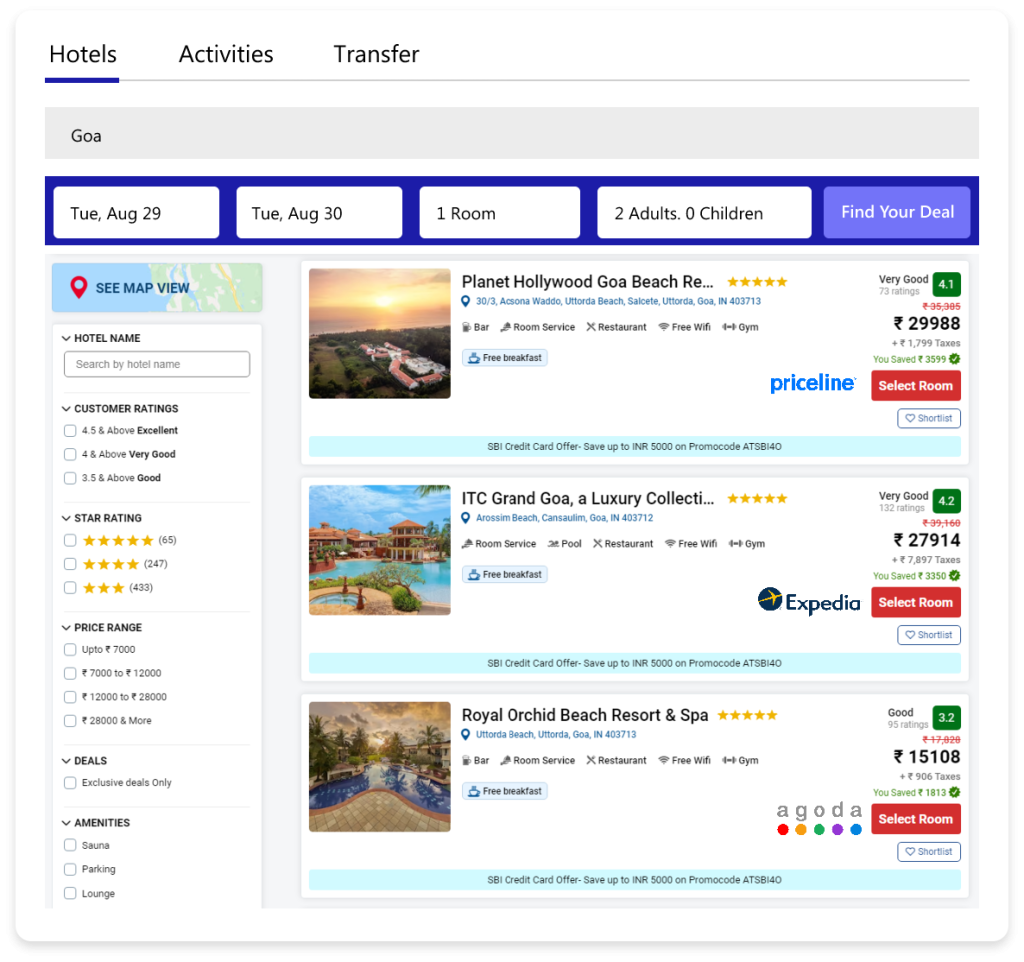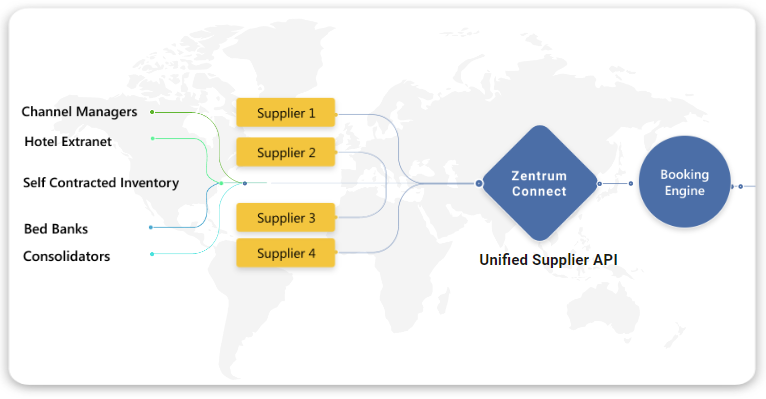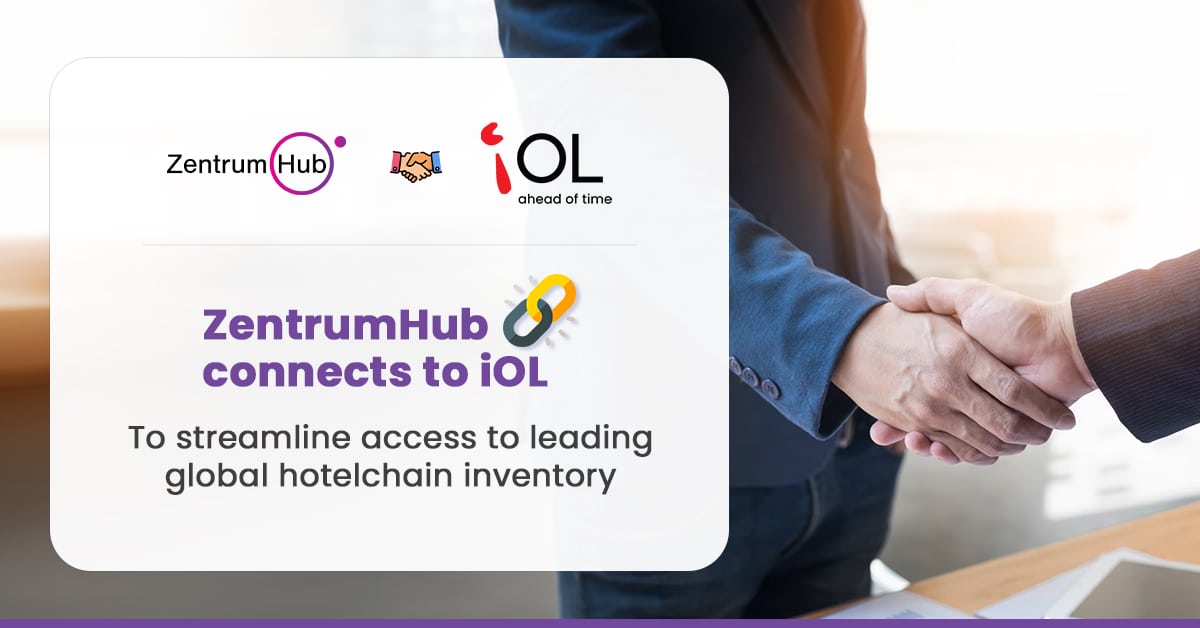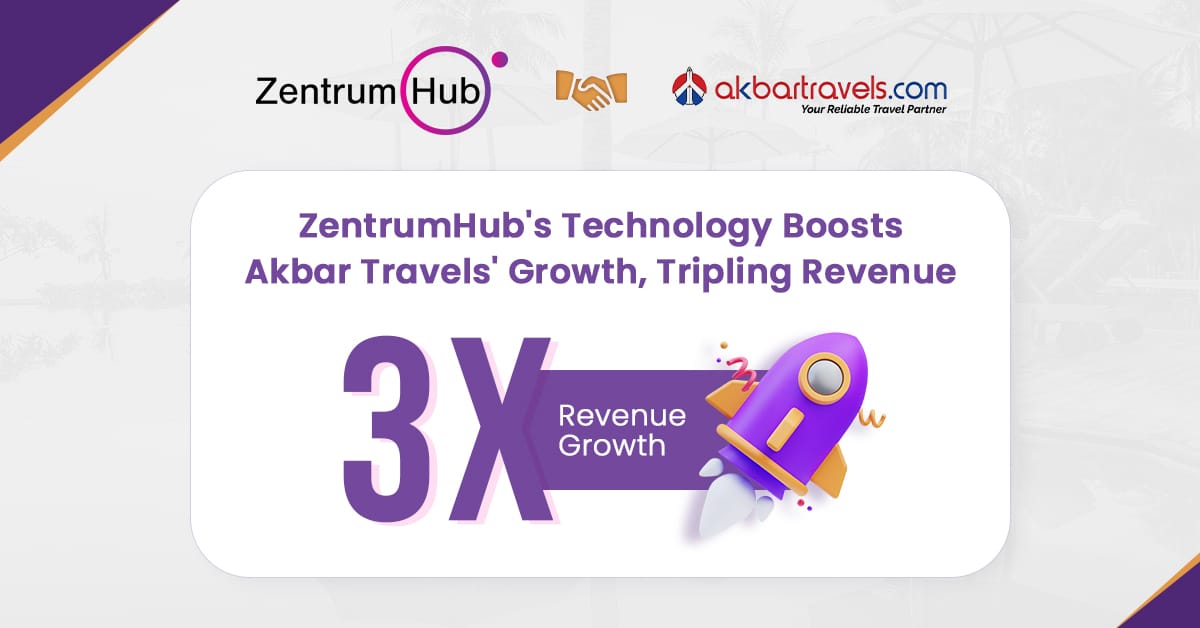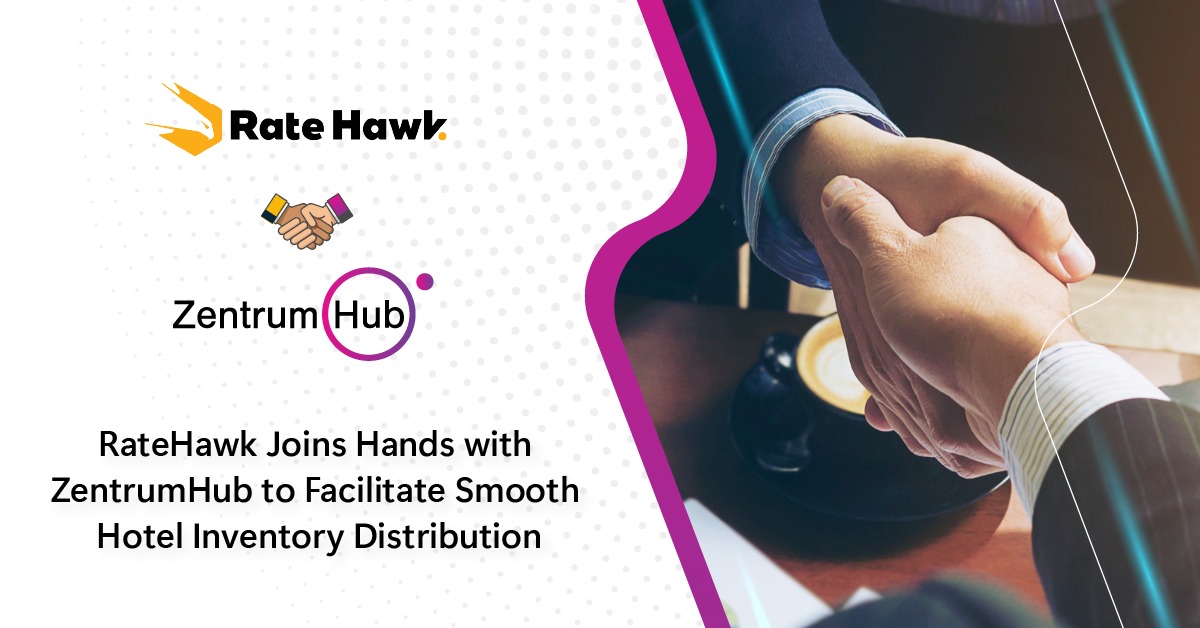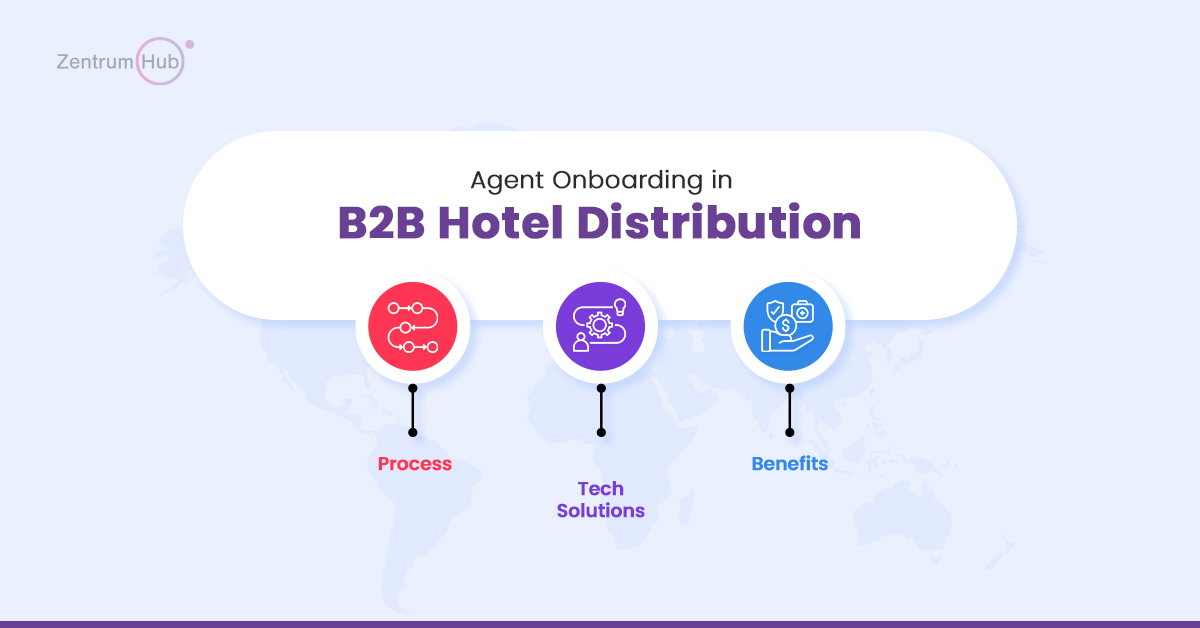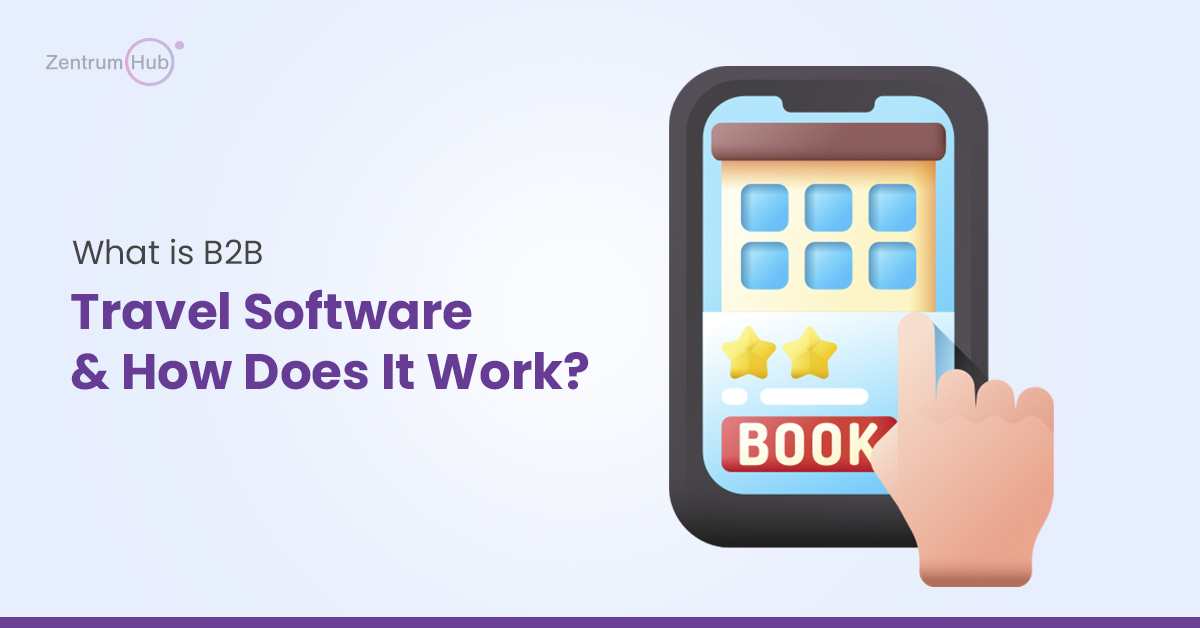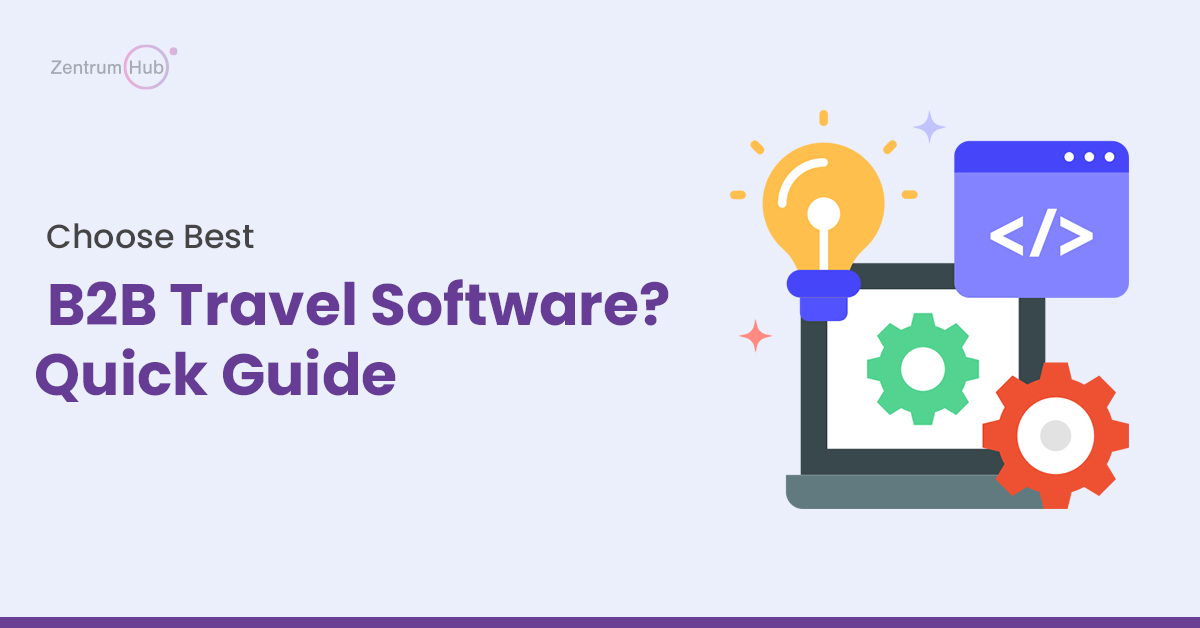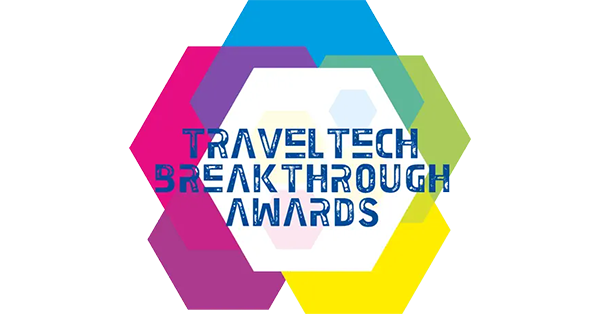AI Revolution in Travel Industry in 2025: CEO’s Perspective
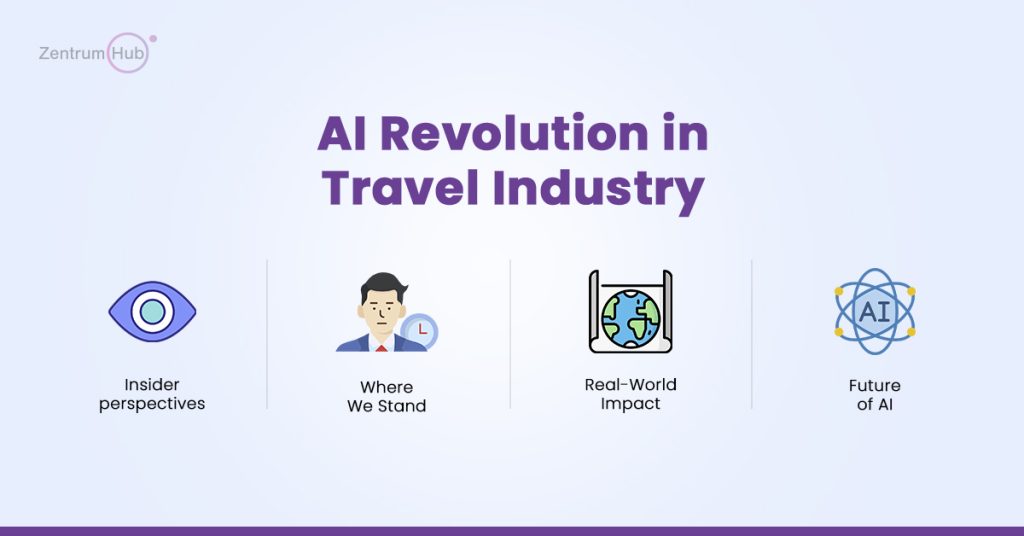
CEO’s perspective on future of travel industry with AI innovations, emerging trends & impact of AI-driven experiences shaping the way we travel in 2025 and beyond
25+ Must-Attend Travel Trade Shows in 2025 [Updated List]
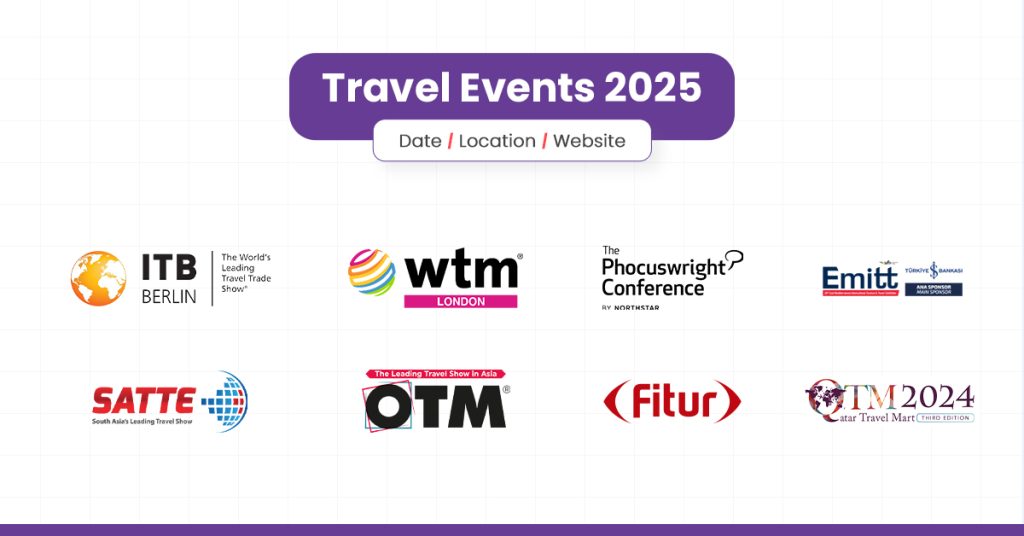
Plan your 2025 travel industry calendar with 25+ major trade shows. Includes ITB, WTM, FITUR, ATM Dubai, OTM, SATTE & more
Planning for ITB Berlin 2025? Here’s Complete Guide!
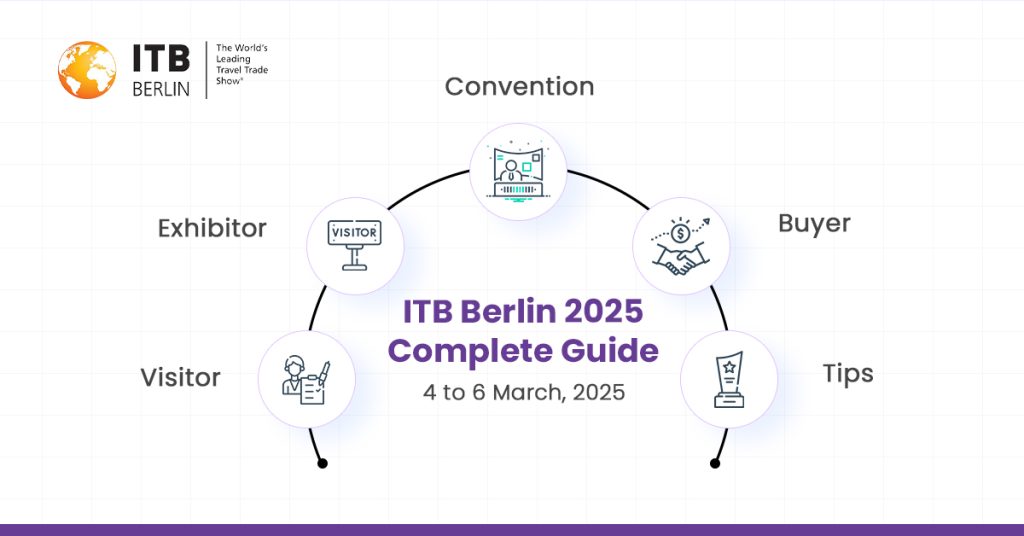
The global travel industry is evolving at an unprecedented pace, driven by digital transformation, automation, and ever-changing consumer behaviour. As travel professionals, staying ahead of market trends and innovations is no longer optional—it’s a necessity. And when it comes to gaining valuable industry insights, networking with decision-makers, and discovering groundbreaking travel technology, ITB Berlin 2025 is the ultimate event to attend. Dubbed “The World’s Leading Travel Trade Show,” ITB Berlin has been a powerhouse event since 1966, bringing together thousands of exhibitors, buyers, and tourism stakeholders from across the globe. If you are planning to be part of ITB Berlin 2025, this guide will equip you with all the key details to ensure you make the most of this event. Key Details: ITB Berlin 2025 Dates: March 4-6, 2025Venue: Messe Berlin, GermanyExhibition Space: Over 160,000+ m²Format: In-person B2B trade show & convention This exclusive B2B event caters to travel professionals from various market segments, creating a unique opportunity to expand business horizons. Meet ZentrumHub at ITB Berlin 2025! We are thrilled to announce that ZentrumHub will be exhibiting at ITB Berlin 2025! Our Showcase Zentrum Connect Single API for 75+ Global Hotel Suppliers🔗🎥 Live Demonstrations💬 One-on-One Consultations Why Visit ZentrumHub at ITB Berlin 2025? Discover how to reduce API costs by 60% Learn about our automated supplier failover system Explore our dynamic rate management solutions Meet our leadership team & industry experts 📍 Visit our Booth Hall/Stand: 10.1 / 209 Book Your Time with ZentrumHub for ITB Berlin 2025 Why ITB Berlin 2025 is a Must-Attend Event? Whether you’re a travel tech innovator, hospitality professional, tour operator, or an industry leader looking to explore new business opportunities, ITB Berlin 2025 is an unmissable event. Here’s why: A Truly Global Platform With nearly two-thirds of exhibitors and almost half of attendees coming from international markets, ITB Berlin serves as the most significant global hub for the travel and tourism industry. Innovation at Its Core The event showcases the latest in travel technology, AI solutions, automation tools, and digital transformation—offering a front-row seat to cutting-edge innovations that will shape the future of travel. Business & Networking Opportunities ITB Berlin is not just an exhibition—it’s a thriving ecosystem for business development. Meet decision-makers, top-tier buyers, suppliers, and travel industry leaders under one roof. Whether you’re seeking partnerships, business growth, or investment opportunities, ITB Berlin provides direct access to industry movers and shakers. ITB Berlin 2024: A Look Back at Success Before diving into ITB Berlin 2025, let’s look at some key statistics from the 2024 edition to understand the scale of this event: 100,000+ trade visitors 1,300+ qualified top buyers 190+ participating countries & regions 3,500+ media representatives & travel bloggers 24,000+ convention attendees 400+ expert speakers 200+ conference sessions 17 thematic tracks across 4 convention stages Given the enormous success of ITB Berlin 2024, the 2025 edition is expected to be even bigger, better, and more influential. Who Should Attend ITB Berlin 2025? Whether you’re a travel tech entrepreneur, hospitality executive, tour operator, DMC, or MICE professional, ITB Berlin 2025 offers something valuable for every travel industry professional. For Travel Technology Companies Gain exposure to global travel stakeholders Showcase AI-driven travel solutions, automation tools, and booking engines Generate high-quality leads and build meaningful partnerships Stay updated on emerging travel technology trends For Travel Agencies & Tour Operators Meet and collaborate with worldwide suppliers Connect with travel technology providers for seamless automation Explore exclusive business-matching opportunities Stay ahead of industry shifts, traveller expectations, and digital trends For Hoteliers & Hospitality Professionals Discover cutting-edge hospitality technology Connect with hotel distribution platforms, channel managers, and OTAs Learn about guest personalization trends and digital booking strategies For Destination Management Companies (DMCs) Promote regional tourism offerings Develop strategic collaborations with travel agencies and tour operators Gain access to new source markets and business leads Exhibition Structure: What Can You Expect at ITB Berlin 2025? ITB Berlin is not just an exhibition—it’s an industry powerhouse. The event is structured across various market segments, ensuring every travel business can find its niche. Key Market Segments at ITB Berlin 2025 ✔ Adventure Tourism – Outdoor experiences, sustainable travel, and eco-tourism✔ Business Travel – Corporate travel management, networking, and digital solutions✔ LGBTQ+ Travel – Dedicated services catering to LGBTQ+ travelers✔ Luxury Travel – High-end tourism, premium experiences, and exclusive hospitality✔ Medical Tourism – Healthcare-driven travel solutions and wellness tourism✔ Travel Technology – AI-powered travel platforms, automation tools, and software solutions✔ Geographic Destinations – Tourism boards, DMCs, and national pavilions With thousands of exhibitors, ITB Berlin is the ultimate hub for exploring new products, partnerships, and innovations. ITB Berlin Convention 2025: The Global Think Tank Running alongside the exhibition, the ITB Berlin Convention is where industry leaders, technology pioneers, and market analysts discuss the future of travel. What to Expect at the ITB Berlin Convention 2025? 🎤 Expert panels on emerging travel trends 📢 Keynotes by global travel industry leaders 🚀 Innovation showcases highlighting travel tech advancements 📚 200+ sessions across 4 main stages 📍 17 themed tracks covering industry-critical topics Some of the key topics that will take center stage include: ✔ The Future of AI & Automation in Travel✔ Digital Transformation in Hospitality & Tourism✔ Sustainable & Responsible Tourism Strategies✔ The Evolution of Online Travel Agencies (OTAs)✔ Changing Consumer Behavior & Travel Preferences For travel professionals looking to stay ahead of the curve, the ITB Berlin Convention is a must-attend event. ITB Buyers Circle: Exclusive Benefits for Top Buyers For travel buyers, ITB Berlin offers an elite invitation-only membership program—the ITB Buyers Circle. Who Can Join? Leisure travel buyers Corporate travel buyers MICE industry professionals Exclusive Benefits of ITB Buyers Circle ✔ Free admission to ITB Berlin✔ VIP access to premium networking events✔ Personalized assistance and support✔ Exclusive industry insights and newsletters If you’re a high-level buyer, ITB Buyers Circle can help you maximize your ITB Berlin experience. Tips for Maximizing Your ITB Berlin 2025 Experience Pre-Event Planning ✅ Register early for exclusive access✅ Schedule key meetings
Get Ready for SATTE 2025: Must-Know Details
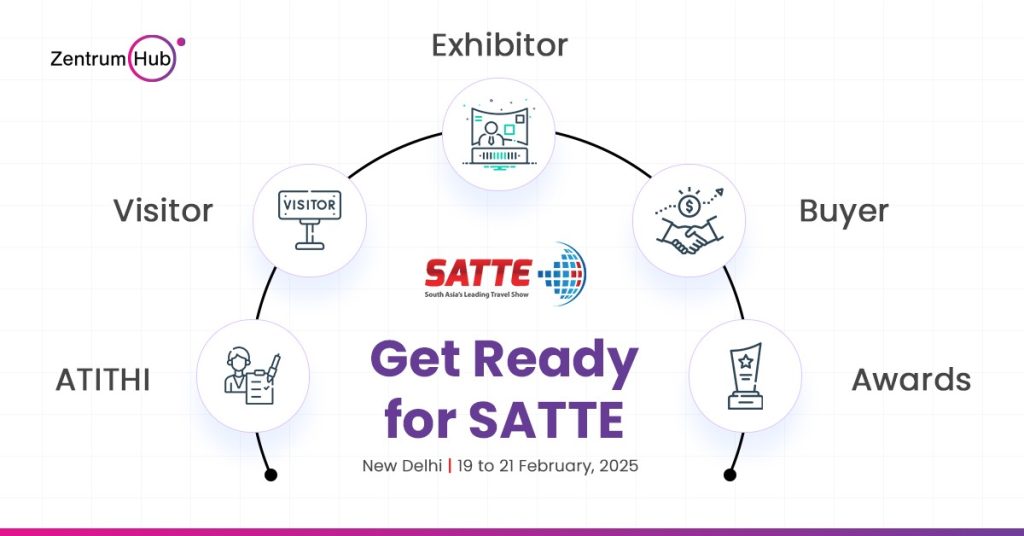
The travel industry is evolving faster than ever & staying ahead of the curve requires access to the right opportunities, platforms, and insights. That’s where SATTE 2025 comes in—a premier event and expo for the travel and tourism industry in South Asia. For Online Travel Agencies (OTAs), tour operators, travel tech companies and other industry players, this event is a launchpad for growth, innovation, and building lasting business relationships. As a leading travel tech company, ZentrumHub will also be participating in SATTE 2025 to showcase our cutting-edge hotel booking engine solutions and supplier connectivity expertise. If you’re looking to simplify operations, enhance your inventory, or leverage AI-driven tools, our team will be on the floor to guide you. Ready to learn why SATTE 2025 is the must-attend event of the year? Let’s dive in! What is SATTE 2025? South Asia’s Travel Tourism Exchange(SATTE) is premier event for the travel & tourism industry in South Asia. Taking place in January 2025, SATTE is the ultimate gathering for professionals looking to explore new business opportunities, gain insights into industry trends & build valuable partnerships. For Online Travel Agencies (OTAs) this event serves as a launchpad to drive growth and innovation. Dates: 19th, 20th & 21st February 2025 Location: India International Convention & Expo Centre, New Delhi, India” With 32 years of legacy, SATTE has established itself as the leading travel trade exhibition in South Asia. It’s the go-to destination for exploring new business opportunities, discovering trends, and connecting with global leaders. SATTE Growth Over the Years SATTE has consistently shown remarkable growth in terms of visitors, exhibitors, and buyers. Let’s take a look at its progress over the last three years: Here are the impressive numbers: Year Number of Buyers Number of Visitors Number of Exhibitors 2022 550+ 25,000+ 1,000+ 2023 600+ 30,000+ 1,200+ 2024 800+ 35,000+ 1,500+ These impressive numbers highlight SATTE’s success as a hub for networking, innovation, and business opportunities in the travel industry. Important Links for SATTE 2025: Did you come here just to find the key links? Don’t worry; we’ve got you covered! Details Link SATTE Official Website Visit Visitor or Participant Registration Register Register as Buyer Register Book Stand or Booth Book SATTE Award Nominate Venue/Location View Location Want to know more? Stay right here on this blog! Why you should Exhibit at SATTE 2025? Exhibiting at SATTE 2025 is your chance to maximize your brand visibility, build connections, and gain a competitive edge in the global travel market. Here’s why: Connect With Industry Buyers: Gain the opportunity to conduct business with over 36,000+ qualified industry buyers and trade visitors. Pre-Scheduled B2B Meetings: Benefit from pre-scheduled B2B meetings, an effective tool for conducting quality business on a global scale. Global Exposure: Showcase your products and services to the global travel trade community. Branding Opportunities: Take advantage of a series of sponsorship and branding avenues to maximize your brand exposure. Expansive Venue: Spread across more than 25,000 sq.m of exhibition space. Build Strong Connections: Create meaningful connections with the travel trade community. Unrivaled Networking Opportunities: Participate in networking events such as the welcome dinner, networking lunches, and other showstoppers throughout SATTE. Engage with Industry Leaders: Be part of a strong lineup of speakers at the SATTE conference, discussing the current industry scenarios. KEY BENEFITS of exhibiting at SATTE 2025? Here are some of the most significant advantages of being an exhibitor: Generate New Sales Leads: Access a platform to attract and convert new clients. Network With Key Decision Makers: Engage directly with decision-makers to drive business growth. Develop Relationships: Strengthen new and existing partnerships. Launch New Products: Utilize SATTE as the perfect stage to unveil your new products and services. Increase Brand Awareness: Enhance your visibility in the global travel trade community. Gather Market Intelligence: Collect insights to understand trends and market demands. Why Exhibitors Love SATTE: Facts and Figures 97% of exhibitors said they will exhibit again at SATTE. 95% of exhibitors were extremely satisfied with the exhibition. 94% of exhibitors were happy with the quality and traffic of visitors. 90% of exhibitors achieved their business goals of connecting with partners and buyers. 94% of exhibitors collected valuable market information. 87% of exhibitors felt SATTE helped them build their brand effectively. Exhibitor Categories You’ll See at SATTE 2025 Exhibitor Categories Examples Airport Authorities Major airport organizations Air Charter Companies Private and commercial air charter services Airlines – Domestic and International National and global airlines Car Rental Companies Rental car providers for travelers Convention Centres Event and conference venues Cruise Liners Luxury and travel-focused cruise companies Educational Institutes Tourism and hospitality training providers Golf Courses & Resorts Golf resorts and leisure destinations Hotels & Resorts Leading hospitality brands IT Companies Travel technology providers Medical Tourism Health and wellness tourism services Spas and Wellness Centres Wellness and relaxation centers Sports Tourism Products Travel experiences centered around sports State Tourism Departments Indian state tourism organizations National / International Tourism Organizations Tourism boards and organizations Travel Agents Independent and company-backed agents Tour Operators Domestic and international tour companies Want to see who exhibited last year? Check out the SATTE 2024 Exhibitor List here: https://satte.in/Exhibitor-List-2024 Exhibitor Rates for SATTE 2025 Space Type Rate (INR) Rate (USD) Bare Space ₹24,835 per sq.m + 18% GST $581 per sq.m + 18% GST Shell Scheme ₹26,015 per sq.m + 18% GST $606 per sq.m + 18% GST Note: Please connect with the SATTE Exhibitor Stall/Booth Booking Team for customized pricing. Ishaan Nahar | M: +91 99201 95621 | E: nahar@informa.com Sanjiba Ningthoujam | M: +91 98107 21549 | E: ningthoujam@informa.com Mankiran Kaur | M: +91 96505 92631 | E: kaur@informa.com Are you a visitor wondering if SATTE is worth attending? Decide for yourself based on the following points: Why Visit SATTE 2025? Interact with 1,400+ exhibitors on the floor. Experience participation from 50 countries and 28 state tourism boards. Benefit from 32 years of legacy as the leading event in travel and tourism. Gain profitable insights from the who’s who
Benefits of Travel Agency Software
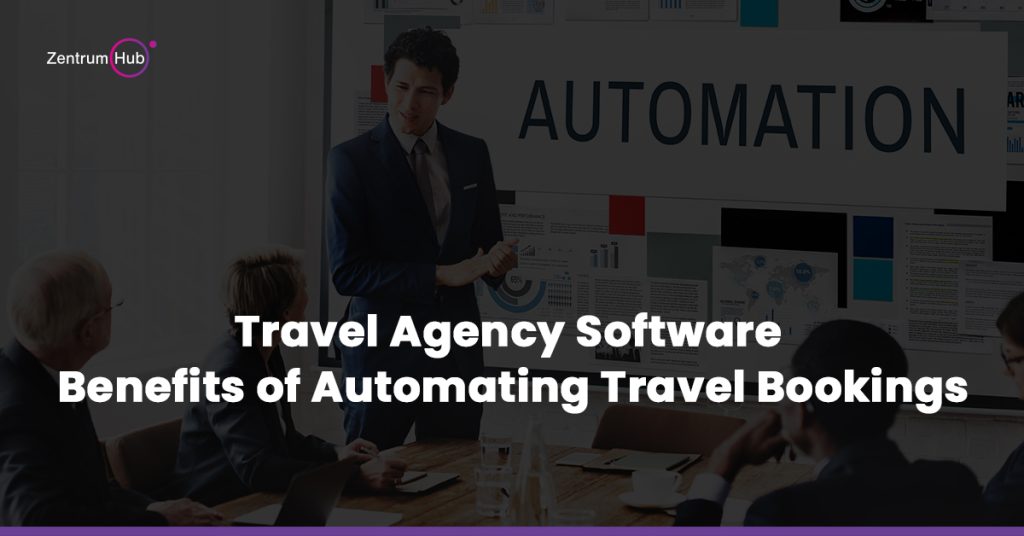
In an era defined by digital convenience, automation has become a cornerstone of successful businesses, particularly in the travel industry. Travel agencies today face increasing competition and heightened customer expectations for seamless, personalized experiences. To meet these demands, automating travel bookings and customer management is not just a luxury—it’s a necessity. This blog explores the myriad benefits of leveraging travel agency software to automate key operations, driving efficiency, customer satisfaction, and profitability. 1.Streamlined Booking Processes The manual process of booking travel—coordinating flights, accommodations, car rentals, and activities—is complex and prone to errors. Automation eliminates these inefficiencies by enabling: a) Faster and Accurate Bookings With automated systems, agents can instantly search and compare thousands of options across suppliers, ensuring the best deals for clients. Booking confirmations, tickets, and itineraries are generated automatically, reducing the risk of errors and saving valuable time. b) 24/7 Booking Capabilities Automation enables customers to book services online at any time, breaking the constraints of traditional business hours. Self-service portals empower clients to explore and reserve trips, while agencies continue to earn revenue around the clock. c) Real-Time Availability Integrated systems provide live updates on flight availability, hotel rooms, and tour packages. This minimizes instances of overbooking and ensures up-to-date inventory information for both agents and clients. Also Read Why OTA Needs Travel Agency Software? 2.Enhanced Customer Management Customer satisfaction is the backbone of a thriving travel agency. Automated customer relationship management (CRM) tools within travel agency software help businesses build strong relationships by: a) Personalization at Scale Automation collects and analyzes customer data, enabling agencies to tailor recommendations based on preferences, past bookings, and budgets. Personalized email campaigns or itinerary suggestions make clients feel valued, enhancing loyalty. b) Centralized Customer Profiles All customer interactions, including inquiries, bookings, and feedback, are stored in a single database. This holistic view allows agents to provide consistent and informed service, even across multiple touchpoints. c) Proactive Communication Automated alerts and notifications keep customers informed about booking confirmations, schedule changes, or upcoming payments. Proactive communication reduces confusion and improves the overall experience. 3.Increased Operational Efficiency Efficiency is key to managing costs and staying competitive. Automation streamlines day-to-day operations by: a) Reducing Administrative Tasks Repetitive tasks like data entry, generating invoices, or manually updating booking details consume significant time. Automation handles these tasks, allowing agents to focus on higher-value activities like crafting unique travel experiences or upselling premium packages. b) Faster Problem Resolution Automated workflows flag issues like payment failures or booking conflicts immediately, enabling quick resolution. Many systems also include integrated customer support tools, such as chatbots, that provide instant assistance for common queries. c) Scalability As your business grows, automation ensures that increased bookings or customer inquiries don’t overwhelm your team. Scalable systems can handle larger volumes of data and transactions with ease. 4.Cost Savings and Revenue Growth By eliminating inefficiencies, automation helps travel agencies reduce costs while simultaneously boosting revenue. a) Lower Overheads Automated systems reduce the need for manual labor in administrative tasks, allowing agencies to operate with leaner teams. This translates to significant savings on salaries and training. b) Minimized Errors Mistakes in bookings or billing can be costly, both financially and reputationally. Automation ensures accuracy, reducing the risk of expensive errors or dissatisfied customers. c) Upselling and Cross-Selling Opportunities Automated systems analyze customer behavior and purchasing patterns, recommending relevant upgrades or additional services. For example, a customer booking a flight might be offered discounted hotel stays or travel insurance, increasing average revenue per booking. Also Read: Travel Agency Software – Challenges & Solutions 5.Improved Data Analytics and Decision-Making Automation unlocks the power of data, offering insights that drive smarter business decisions. a) Real-Time Analytics Travel agency software provides real-time dashboards showing key metrics like booking trends, customer demographics, and revenue streams. This helps agencies identify popular destinations, peak seasons, and areas for improvement. b) Forecasting and Planning Predictive analytics tools analyze historical data to forecast demand, optimize pricing strategies, and plan inventory. Agencies can make data-driven decisions to maximize profits and customer satisfaction. c) Enhanced Marketing Strategies By understanding customer behavior, agencies can create targeted marketing campaigns. For example, promoting luxury tours to frequent high-spenders or offering last-minute deals to budget travelers. 6.Superior Customer Experience In the competitive travel market, a seamless customer experience is a critical differentiator. Automation plays a pivotal role by: a) Offering Convenience Online booking platforms, mobile apps, and automated itineraries make travel planning effortless for customers. Self-service options empower them to customize their trips at their own pace. b) Providing Transparency Automated tools give clients visibility into pricing, availability, and booking policies. Clear information builds trust and reduces the likelihood of disputes. c) Ensuring Consistency Standardized workflows ensure that every customer receives consistent service quality, regardless of the agent or platform they interact with. 7. How Secure is the Hotel API for Managing Bookings and Transactions? Security is a top priority for any OTA handling customer data and transactions. Hotel APIs are designed with robust security protocols to protect sensitive information, such as personal details and payment data. Here’s how they ensure security: Data Encryption This ensures that sensitive information, such as customer names and credit card details, is encrypted during transmission. Authentication APIs use authentication methods such as API keys, OAuth tokens, and IP whitelisting to ensure that only authorized users can access the system. This prevents unauthorized access to the booking system. PCI Compliance If your OTA handles payment data, it must comply with Payment Card Industry Data Security Standards (PCI DSS). Hotel APIs are often PCI-compliant, ensuring that payment data is processed securely. Fraud Detection Some hotel APIs offer built-in fraud detection tools that monitor suspicious booking behavior or flag potential fraud, adding an extra layer of security. 8. Competitive Advantage Adopting automation gives travel agencies a significant edge in an increasingly digital market. a) Meeting Modern Expectations Today’s travelers expect fast, efficient, and digital-first experiences. Automation helps agencies meet these expectations, positioning themselves as innovative and customer-centric. b) Standing Out in the Market Smaller agencies
Major Challenges in Travel API Integration
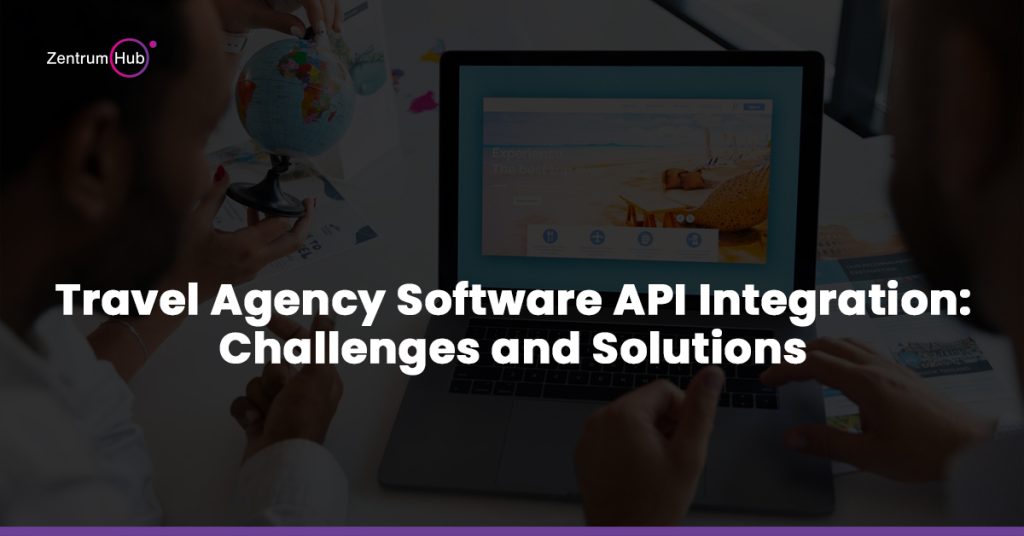
Challenges Faced by OTA during API Integration APIs allow travel agencies to connect with various suppliers, such as airlines, hotels, and car rental services, to provide real-time availability, pricing, and booking functionality. While the benefits are undeniable, implementing API integrations comes with its own set of challenges. For example, a travel agency software integrated with travel APIs can access real-time travel schedules, seat availability, and fare details from various airlines. Similarly, hotel APIs provide room availability, rates, and booking options. APIs play a vital role in automating workflows, reducing manual processes, and offering customers seamless booking experiences. With APIs, travel agencies can aggregate services from multiple vendors into one interface, enhancing efficiency and customer satisfaction. Benefits of Travel Agency Software API Integration Before diving into the challenges, it’s important to understand the key advantages of travel API integration: Real-Time Access: APIs provide real-time data for travels, hotels, and other travel services, ensuring up-to-date inventory and pricing. Expanded Inventory: By integrating multiple APIs, agencies can offer a wider range of services from various suppliers. Customization: Travel agency software can use APIs to create tailor-made travel packages by combining travels, accommodations, and tours. Cost Efficiency: Automation reduces the need for manual interventions, saving time and operational costs. Improved User Experience: APIs enable smooth booking experiences for customers, with features like dynamic pricing and instant confirmations. Challenges in Travel Agency Software API Integration Despite the benefits, travel API integration poses several challenges that can hinder its successful implementation: Data Consistency and Accuracy APIs rely on suppliers to provide accurate and consistent data. Discrepancies in pricing, availability, or booking details can lead to errors, resulting in customer dissatisfaction. Example: A travel API might show seats as available during the booking process but display an error at the payment stage due to outdated inventory. Latency Issues High latency during API calls can slow down response times, causing delays in displaying results to customers. This is especially problematic during peak travel seasons or when multiple users are accessing the system simultaneously. Example: If hotel search results take too long to load, customers may abandon the booking process. Complexity in Integration Integrating multiple APIs from different suppliers can be technically complex. Each API has its own structure, protocols, and data formats, requiring significant customization and development efforts. Example: Travel APIs and car rental APIs often use different naming conventions and data schemas, making it challenging to unify them into one system. Dependency on Third-Party Providers Travel agencies are highly dependent on API providers for maintaining data accuracy, uptime, and overall performance. Downtime or errors on the provider’s end can directly impact the agency’s operations. Example: If an airline’s API goes offline, the agency may not be able to process bookings, leading to lost revenue. Costs and Licensing API providers often charge licensing fees or commission-based charges, which can add up, especially when integrating multiple APIs. Agencies must carefully manage these costs to maintain profitability. Example: Popular APIs like Amadeus or Sabre often come with significant licensing fees, impacting small travel agencies’ budgets. Security Concerns APIs handle sensitive customer information, such as payment details and personal data. Any vulnerabilities in API integration can expose this data to security threats like hacking or unauthorized access. Example: An insecure API connection could lead to a data breach, compromising customer trust and agency reputation. Scalability and Maintenance As the business grows, agencies need their software to scale and handle increased traffic and API requests. Maintaining API integrations, especially when providers update their systems, can be resource-intensive. Example: A travel agency expanding its operations may face challenges in scaling its API infrastructure to handle higher volumes of transactions. Solutions to Overcome Travel Agency Software API Integration Challenges For successful API integration, travel agencies need strategic planning and the right tools. Here are practical solutions to address the challenges mentioned above: Implement a Middleware Layer A middleware layer acts as a bridge between the travel agency software and multiple APIs. It standardizes data formats, protocols, and workflows, making integration easier and more efficient. Benefits: Reduces complexity in managing multiple APIs. Provides a centralized platform for monitoring and troubleshooting API issues. Example: A middleware solution can unify travel, hotel, and car rental APIs into a single interface for the travel agency software. Optimize API Performance Use caching mechanisms and load balancing to reduce latency and improve response times. Caching stores frequently accessed data, such as popular travel routes or hotel availability, reducing the need for repeated API calls. Benefits: Faster response times for users. Reduces the load on API servers during peak traffic. Example: Implementing a caching solution for frequently searched destinations during the holiday season can enhance user experience. Choose Reliable API Providers Partner with reputable API providers known for their reliability, uptime, and support services. Perform due diligence by checking reviews, uptime statistics, and available support channels. Benefits: Ensures consistent data accuracy and performance. Reduces dependency risks associated with unreliable providers. Example: Providers like Sabre, Amadeus, and Expedia Partner Solutions offer robust and well-documented APIs. Monitor and Test Regularly Implement monitoring tools to track API performance, uptime, and error rates. Regular testing helps identify potential issues and ensures seamless integration. Benefits: Detects and resolves issues proactively. Improves overall system stability. Example: Use tools like Postman or API monitoring services to test endpoints and measure response times. Prioritize Security Measures Secure API connections with encryption protocols like HTTPS and use authentication mechanisms such as OAuth 2.0 to protect sensitive data. Conduct regular security audits to identify and fix vulnerabilities. Benefits: Protects customer data and builds trust. Reduces the risk of cyber threats. Example: Ensure that payment gateways integrated via APIs comply with PCI DSS (Payment Card Industry Data Security Standard). Manage Costs Effectively Negotiate pricing with API providers and evaluate usage-based models to optimize costs. Consider using free or lower-cost APIs for less critical services. Benefits: Keeps operational costs under control. Allows for more sustainable scaling of services. Example: Use a combination of premium APIs for core services and open-source
Integrating Payment Systems into Your Travel Agency Software
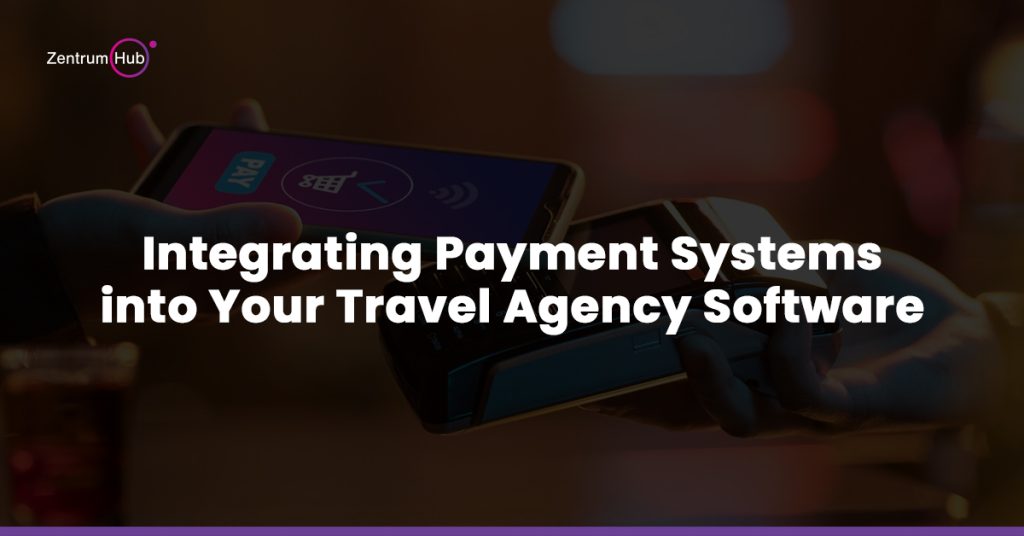
Integrating Payment Systems into Your Travel Agency Software The travel industry thrives on customer convenience and satisfaction. An integral part of that is ensuring that customers have a frictionless way to pay for services. Integrating a robust payment system into your travel agency’s software can transform your operations, making transactions faster, more secure, and capable of accommodating diverse payment methods. In the fast-paced world of travel, seamless and secure payment processes are critical for an exceptional customer experience. Integrating a payment system into your travel agency software ensures smooth transactions, enhances trust, and fosters customer loyalty. This comprehensive guide will explore the benefits, challenges, and best practices for effectively integrating payment systems. Benefits of Payment System Integration a. Improved Customer Experience A streamlined payment process is fundamental to customer satisfaction. The ability to quickly complete a transaction means fewer cart abandonments and higher conversion rates. For instance, a study by the Baymard Institute found that nearly 18% of shoppers abandon their carts due to a long or complicated checkout process. A seamless integration reduces these friction points. b. Enhanced Security and Compliance Integrating a trusted payment system comes with built-in security protocols such as tokenization and encryption, which protect sensitive data. Compliance with global standards like PCI DSS (Payment Card Industry Data Security Standard) ensures that your agency operates within legal requirements, safeguarding both you and your customers. c. Expanded Payment Options Offering various payment methods, such as credit cards, e-wallets, bank transfers, and even cryptocurrencies, appeals to a global audience. This is especially important for travel agencies, as clients often come from different parts of the world with varying payment preferences. Statistic: According to Worldpay’s Global Payments Report, over 40% of global online transactions are made via digital wallets. Types of Payment Systems a. Payment Gateways vs. Payment Processors Understanding the difference between payment gateways and processors is crucial: Payment Gateways: Serve as the intermediary between your travel agency’s software and the financial institution. They encrypt payment information, verify its authenticity, and send it to the bank for approval. Examples include Authorize.Net and Stripe. Payment Processors: Handle the transaction’s backend by transferring data between the bank and your merchant account. Often, a complete system will use both a gateway and a processor. b. Examples of Popular Systems Stripe: Offers extensive APIs for customization, making it ideal for agencies wanting tailored solutions. PayPal: Provides ease of use and consumer trust, suitable for agencies looking to add credibility. Square: Known for its user-friendly interface and solid support for small to mid-sized businesses. Insight: If your target market spans multiple regions, select a provider that supports a variety of currencies and local payment methods to prevent conversion issues and high transaction fees. Also Read: Top Benefits of Travel Agency Software for Automated Bookings Key Considerations Before Integration a. Compatibility with Existing Software Evaluate the technical specifications of your current travel agency software. Most popular travel platforms support third-party integrations via APIs or plug-ins, but it’s essential to ensure your choice is compatible to avoid costly development time. b. Security Protocols and Compliance Choose a system that not only supports SSL certificates but also uses advanced authentication methods such as two-factor authentication (2FA) and tokenization. Compliance is non-negotiable for protecting user data. c. User Experience and Checkout Flow The payment process should be intuitive. A cluttered or overly complex interface can lead to abandoned bookings. Ensure minimal steps between selecting a service and completing the payment. Best Practice: Conduct user testing to identify any bottlenecks in the checkout process. Tools like Hotjar can provide heatmaps and session recordings for optimization. Step-by-Step Guide to Integrating a Payment System Step 1: Choose the Right Payment Provider Your first step should be researching the providers that best align with your business needs. Consider factors such as transaction fees, customer support, global reach, and customization capabilities. Checklist: Support for multi-currency Transparent fee structures Responsive customer support Step 2: Set Up API Integration Once you’ve selected a provider, your development team will need to integrate the payment system’s API. This may involve coding and setting up webhooks for transaction statuses. Pro Tip: Use sandbox environments provided by many payment providers to test the integration without real money transfers. Step 3: Implement Security Measures Security is paramount. Implement SSL/TLS certificates for data encryption and consider integrating 3D Secure for an extra layer of cardholder authentication. Tip: Enable address verification services (AVS) to verify billing addresses for added fraud protection. Step 4: Test and Optimize Run comprehensive tests for all types of transactions, including successful payments, declined cards, refunds, and partial payments. Testing helps identify any potential issues before going live. Checklist for Testing: Verify multi-device compatibility (desktop, mobile, tablet) Test various payment methods (credit cards, digital wallets, etc.) Simulate high transaction loads to test the system’s response under pressure. Also Read Travel Agency Software API Integration: Challenges and Solutions Challenges and How to Overcome Them a. Technical Issues Integrating a payment system may lead to unexpected bugs or compatibility issues. Collaborating with experienced developers who understand both your travel software and the payment system can alleviate these technical difficulties. Solution: Work with payment providers that offer strong developer support, including detailed documentation and responsive technical teams. b. Regulatory Challenges Navigating regulations like PCI DSS and PSD2 (for European transactions) can be daunting. Partnering with a payment provider familiar with these regulations can help you stay compliant. Advice: Periodically audit your payment systems and consult legal experts to ensure ongoing compliance. Best Practices for a Successful Integration a. Regular Updates and Maintenance The digital payment landscape changes rapidly. Regularly update your software and payment system to patch vulnerabilities and add new features. Tip: Schedule periodic reviews of your payment process to assess whether it aligns with the latest security standards and customer expectations. b. Transparent Policies Display clear payment policies, including refunds and cancellations. Transparency reduces disputes and chargebacks, contributing to smoother operations. Example: Use straightforward language and bullet points for policies on your payment
Enhancing Customer Experience with Travel Agency Software

How to Enhance Customer Experience with Travel Agency Software? Travel agencies must go beyond traditional practices to provide seamless, personalized, and efficient services. This is where travel agency software comes into play. These solutions, especially when powered by travel APIs, enable agencies to streamline their operations and meet modern customer expectations. Understanding the Role of Travel Agency Software What is Travel Agency Software? Travel agency software is a specialized platform that helps travel agencies automate and manage various tasks such as bookings, itinerary planning, customer communication, and payment processing. With robust integration capabilities, these tools connect agencies to travel suppliers, enhancing service delivery and user experience. Key Benefits of Implementing Travel Agency Software Streamlined Booking Processes: Simplifies and automates reservation management for flights, hotels, tours, and more. Centralized Data Management: Stores customer data securely, allowing agents to quickly access and utilize information for personalized services. Real-time Updates: Keeps clients informed with real-time availability and pricing, thanks to travel API integrations. Enhanced Customer Communication: Automates emails and notifications to keep customers informed throughout their journey. Enhancing Customer Experience with Travel APIs What are Travel APIs and How Do They Work? Travel APIs act as connectors between different travel service providers and travel agencies. By integrating these APIs into their software, travel agencies can pull real-time data on flights, hotels, car rentals, and even weather conditions, directly improving the scope and quality of services they offer. Benefits of Integrating Travel APIs Comprehensive Search Options: Provide customers with access to a vast array of travel options, allowing them to customize their bookings effortlessly. Personalization at Its Best: APIs enable agents to tailor travel packages according to individual preferences, boosting client satisfaction. Time and Cost Efficiency: Automate processes that would otherwise take hours, freeing up resources and allowing agents to focus on customer relationships. Real-Time Updates and Transparency: Customers receive accurate, up-to-date information on availability and prices, leading to trust and loyalty. Features That Elevate the Customer Experience 1. User-Friendly Interfaces A smooth, intuitive user interface is vital for enhancing customer interactions. Travel agency software with an easy-to-use platform ensures that both agents and clients can navigate booking processes without complications. A clutter-free interface simplifies complex workflows, leading to higher satisfaction. 2. AI and Chatbots for 24/7 Support AI-powered chatbots integrated within the software offer round-the-clock support to customers. They can handle inquiries, suggest travel plans, and provide updates instantly. This technology ensures immediate responses, catering to the modern customer’s preference for quick resolutions. 3. Mobile Accessibility In an era where mobile devices dominate, travel agency software should be mobile-friendly. Customers should be able to view and manage their bookings, make inquiries, and receive real-time notifications on their phones or tablets, ensuring flexibility and convenience. 4. Customizable Itineraries Software that allows the creation of tailor-made itineraries enhances the personal touch. Customers can receive itineraries that align with their specific travel interests, ensuring a memorable experience. 5. Secure Payment Gateways Offering secure, versatile payment options builds customer confidence. Integrated payment solutions that support multiple currencies and payment methods reduce friction in the booking process and contribute to a smoother transaction experience. Streamlining Operations for a Seamless Experience Automation in Travel Management Automation in itinerary generation, reservation confirmations, and customer feedback collection makes it easier for agents to focus on delivering personalized service. Reducing manual workloads allows for better allocation of resources, translating to improved customer engagement. Data Analytics for Enhanced Personalization Advanced data analytics capabilities in travel agency software empower agencies to analyze customer preferences and behaviors. This data enables them to create highly personalized travel offers, increasing the likelihood of repeat business. Best Practices for Maximizing Travel Agency Software Training and Support: Ensure that your team is well-trained to make the most out of the software’s features. Continuous Updates: Regularly update the software and API integrations to include new features and improve security. Customer Feedback Integration: Actively seek feedback and use it to tweak the software settings or add relevant features that address client needs. Leverage Partnerships: Work with reputable API providers to guarantee reliable data sources. The Future of Customer Experience in the Travel Industry With advancing technologies, travel agency software will continue to evolve, incorporating innovations like virtual reality tours and predictive analytics. These developments will help travel agencies offer even more interactive and customized experiences, setting new standards for customer satisfaction. Recommended Reads for You Top Benefits of Travel Agency Software for Automated Bookings Travel Agency Software API Integration: Challenges and Solutions Integrating Payment Systems into Your Travel Agency Software How to Enhance Customer Experience with Travel Agency Software? Why Travel Agency Software is a Game-Changer? Why does every OTA need travel agency software? Conclusion In an era where customer expectations are at an all-time high, utilizing the right travel agency software equipped with travel APIs is a game-changer. Not only does it streamline operations, but it also empowers agencies to deliver a highly personalized and seamless experience that meets the needs of today’s travelers. By embracing these technologies, travel agencies can maintain competitive edges, foster customer loyalty, and thrive in the dynamic travel market. FAQs : How to Enhance Customer Experience with Travel Agency Software? What is travel agency software? Travel agency software helps agencies manage bookings, itineraries, and customer interactions, streamlining processes and enhancing service quality. How do travel APIs improve customer experience? Travel APIs provide real-time data on travel services, enabling agencies to offer timely, customized, and transparent options to clients. Can travel agency software automate customer communication? Yes, it automates email notifications, confirmations, and updates, ensuring customers remain informed throughout their journey. Is mobile compatibility important for travel agency software? Absolutely, as it allows customers to manage their bookings and receive updates on their mobile devices, enhancing convenience and satisfaction.
Why Travel Agency Software is a Game-Changer?
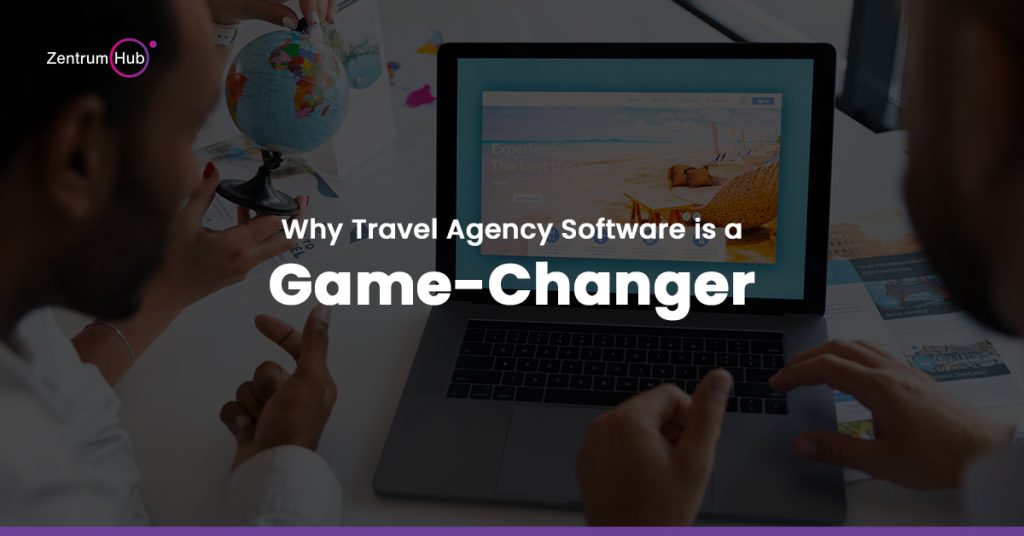
Why Travel Agency Software is a Game-Changer? Running a travel agency is more than just booking flights and hotel rooms. It’s about crafting memorable experiences, understanding clients’ unique needs, and bringing together the perfect blend of destinations, activities, and services. But behind every seamless trip lies a maze of logistical challenges: tracking bookings, managing itineraries, handling supplier communications, and keeping up with ever-evolving client expectations. The complexities can be overwhelming, especially in today’s fast-paced, technology-driven market. This is where travel agency software steps in, transforming the way agencies operate by automating key processes, consolidating data, and offering intuitive tools that enhance both customer experience and operational efficiency. With the right software, a small team can handle hundreds of clients, while a larger agency can deliver highly personalized service on a scale. This blog explores how travel agency software is revolutionizing the industry, from simplifying day-to-day operations to helping agencies grow. Whether you’re a boutique agency or a large firm, discover how this technology can help you manage your travel business with ease. The Evolution of Travel Agency Software Over the years, travel agency software has evolved from basic booking systems into comprehensive platforms that streamline nearly every aspect of a travel business. Initially, travel agencies relied on simple tools for managing bookings, collecting client data, and handling supplier communications. Today’s advanced software does far more, integrating with global distribution systems (GDS), offering real-time inventory, and providing powerful CRM capabilities. Key Developments in Travel Agency Software: Automation of Routine Tasks: Booking confirmations, invoicing, and customer follow-ups can be automated, saving valuable time. Cloud-Based Solutions: Most modern software is cloud-based, allowing for remote accessibility and seamless collaboration across teams and locations. Data-Driven Insights: Agencies now have access to analytics that track customer preferences, revenue streams, and operational efficiency. Mobile Compatibility: Mobile-friendly interfaces make it easier for agents to manage bookings and respond to customer inquiries on the go. These changes reflect a shift in the travel industry where personalization, real-time response, and operational efficiency have become key differentiators. Agencies that leverage advanced software gain a significant competitive advantage in meeting these demands. Benefits of Using Travel Agency Software Implementing travel agency software can provide numerous advantages. Here are the top ways in which it can improve both operations and client satisfaction: a) Improved Efficiency and Productivity By automating routine tasks like booking confirmations, client follow-ups, and payment reminders, travel agency software frees up time for agents to focus on higher-value activities. It reduces errors, streamlines workflows, and speeds up response times, all of which are essential in a fast-moving industry. b) Enhanced Customer Experience Today’s travelers expect personalized experiences and quick responses. With travel agency software, agents have instant access to client data, booking history, and preferences, enabling them to tailor their recommendations. This leads to higher client satisfaction and increased loyalty. c) Financial Management and Transparency Financial tools within travel software often include features for invoicing, expense tracking, and reporting, providing greater transparency. Agencies can easily monitor cash flow, manage payments, and generate detailed financial reports, which is crucial for maintaining profitability and planning future budgets. d) Real-time Access to Inventory and Rates Integrations with GDS and supplier networks mean that travel agency software provides real-time access to the availability and rates of flights, accommodations, tours, and other services. This enables agents to make accurate, up-to-date bookings, minimizing the risk of double bookings or pricing errors. e) Scalability for Business Growth Travel agency software grows with your business, allowing you to handle an increasing number of clients and bookings without overwhelming your team. Scalability is crucial as your agency expands, ensuring that you can manage larger workloads and more complex itineraries. f) Streamlined Supplier Management Managing relationships with multiple suppliers can be a challenge. Travel agency software consolidates supplier data and interactions, helping you track supplier performance, manage contracts, and streamline communications. Also Read How to Enhance Customer Experience with Travel Agency Software? Key Features to Look for in Travel Agency Software Choosing the right software requires an understanding of the features that will benefit your agency the most. Here are some essential features to look for when evaluating travel agency software: a) Centralized Customer Relationship Management (CRM) A CRM is the backbone of any successful travel agency. It allows agents to track client interactions, preferences, and booking histories in one place, making it easier to personalize the customer experience. A comprehensive CRM can also facilitate client segmentation for targeted marketing and loyalty programs. b) Booking Management System An efficient booking management system automates the booking process from start to finish, handling everything from reservations to confirmations and cancellations. It should ideally integrate with major travel suppliers and GDS to provide up-to-date availability and pricing. c) Itinerary Creation and Management A robust itinerary builder enables agents to create visually appealing, customized travel plans that can be shared digitally with clients. Some software platforms even allow clients to view their itinerary through a mobile app, ensuring they have all the details at their fingertips. d) Financial Management Tools Travel agency software should include invoicing, expense tracking, and payment processing features. Some platforms offer multi-currency support, essential for agencies dealing with international clients. Financial reports and analytics help agencies maintain budget control and forecast future expenses. e) Reporting and Analytics Detailed reporting and analytics tools can track booking trends, customer demographics, and financial performance. This data can help agencies optimize their offerings, tailor their marketing strategies, and make data-driven decisions to improve profitability. f) Marketing and Communication Tools Effective client communication is essential in the travel industry. Look for software that includes automated email campaigns, SMS notifications, and social media integrations, enabling you to keep clients informed at every stage of their journey. g) Mobile and Cloud-Based Accessibility Cloud-based solutions allow agents to work from anywhere and ensure that they have real-time access to client information and booking updates. Mobile-friendly software further enhances flexibility, enabling agents to manage bookings on the go. Also Read Integrating Payment Systems into Your Travel Agency
Travel API Comparison: 8 Factors for Selecting the Best One

Travel API Comparison: 8 Factors for Selecting the Best One The right travel API not only expands the services available on your platform but also enhances the user experience, enabling faster booking processes and personalized travel options. However, selecting the best travel API requires careful evaluation, as various factors influence its functionality and suitability for your business model. In this blog, we’ll examine eight key factors to consider when choosing a travel API for your business. With a focus on travel API, hotel API, and hotel booking API solutions, we’ll provide insights to help you make an informed decision for a successful travel API integration. Coverage and Inventory One of the first considerations is the API’s inventory scope. Different travel APIs offer varying levels of access to hotels, airlines, car rentals, and other travel services. Assessing the API’s coverage is crucial, as it determines the breadth of options available to your customers. Global Reach: If your customers are international, a travel API with global inventory across diverse regions is essential. Hotel API and Hotel Booking API Coverage: For hotel-centric businesses, assess if the API offers extensive hotel listings, including accommodations ranging from budget to luxury hotels, independent properties, and popular hotel chains. Specialty Inventory: If you serve a niche, like eco-travel or boutique accommodations, look for an API that supports these specialized options. An API with a broad and diverse inventory lets your platform cater to a larger audience and meet a wide range of travel needs. API Documentation and Developer Support A well-documented API with strong developer support is essential for smooth integration. Comprehensive documentation saves time by providing clear instructions and code samples, helping developers understand the API’s structure and functionality. Ease of Integration: The API should have well-organized documentation, with example codes, parameter details, and error-handling instructions. Developer Tools: Look for APIs that offer SDKs, code libraries, and sandbox environments. These tools help test the API’s functionality before live deployment. Dedicated Support: Developer support options, like forums, live chat, or 24/7 technical support, can significantly reduce the time and complexity involved in the integration process. A user-friendly API with adequate support reduces the risk of integration errors, enhances developmentspeed, and ensures a reliable customer experience. Also Read Travel APIs: The Cost of Integration for OTAs Real-Time Updates and Data Accuracy Travel data, especially in sectors like hotel and airline booking, changes frequently. A reliable travel API should offer real-time updates on availability, pricing, and itineraries. Data Freshness: Real-time updates help prevent situations where customers see outdated rates or unavailable accommodations. Hotel Booking API Accuracy: For hotel APIs, ensure that details like room types, amenities, cancellation policies, and booking statuses are current. Dynamic Pricing: If your platform requires real-time pricing, make sure the API can deliver accurate pricing without delay. Accurate, real-time data enhances customer trust and minimizes issues like booking cancellations or price discrepancies, which could otherwise harm the user experience. Scalability and Performance The best travel APIs are built to handle high volumes of data requests and deliver fast performance, even during peak times. Scalability becomes essential if you anticipate significant growth in users and bookings. Load Handling: Ensure the API can manage a large number of requests per second, especially if your platform has high traffic. Latency: Low-latency APIs reduce the time it takes to display results, enhancing the user experience. Scalable Architecture: A scalable API architecture enables you to upgrade seamlessly as your user base grows without affecting performance. An API that handles scaling efficiently ensures a smooth booking experience for users, even during seasonal peaks or promotional campaigns. Customizability and Flexibility Flexibility is crucial as it enables businesses to personalize the API experience for their users. Some APIs offer more customization options, allowing you to tailor search parameters, filter results, and control the API’s overall appearance. Search Customization: Advanced search filters (like price range, star ratings, amenities) allow users to narrow down options according to their preferences. Branding Control: Some hotel booking APIs offer custom branding options so that your brand remains prominent during the booking process. Modular Features: Look for modular APIs that allow you to enable or disable specific features according to your platform’s needs. Customizable APIs provide more control over user experience, enabling you to build a unique, branded platform that stands out. Also Read Travel API Integration: Types, Pricing, Benefits & Timeline Pricing Structure and Cost Transparency The pricing model is a critical factor, especially for small or mid-sized travel platforms with limited budgets. Travel API pricing can vary based on usage volume, functionality, and the type of data accessed. Transaction-Based Pricing: APIs may charge per booking or per search request. Assess if this aligns with your business model. Subscription Fees: Some APIs use a fixed subscription cost, which can be ideal for companies with high booking volumes. Freemium Options: Some travel APIs offer basic functionality for free with paid upgrades for additional features. Ensure the pricing model fits your budget and aligns with your projected usage to avoid unexpected costs. Security and Compliance Data security and compliance are paramount when handling personal and payment data. An ideal travel API should meet industry standards for data protection, especially if your platform deals with sensitive customer information. Data Encryption: APIs should use SSL encryption to secure data during transmission. PCI Compliance: For platforms that process payments directly, ensure the API complies with Payment Card Industry (PCI) standards. GDPR Compliance: If your customers are from the EU, check that the API meets GDPR standards for data protection and user privacy. Security-compliant APIs help build customer trust and protect your business from potential legal and financial liabilities. User Experience and Interface Design Finally, consider the overall user experience (UX) the API will provide. An API with a well-designed interface ensures a seamless, engaging booking process for users. Ease of Use: The API should simplify complex booking tasks, making it easy for users to find and book travel options. Consistent Experience: The UI should integrate seamlessly with your platform to offer



